"When can baby face forward in car seat? Is it safe for my young child if I turn the car seat forward?"
Many parents seem to be in a dilemma if they can turn their rear-facing children ride forward-facing.
Well, if you ask Child Passenger Safety technicians (CPST), authorities, and various experts, all young children, but also those 3, 4, or 5-years old kids should remain rear-facing for as long as possible.
And why should you obey the rules? Stay tuned!
More...
Table of Contents
- Is Riding Rear-facing Safer Than Forward-facing?
- Rear-facing Car Seats: More Safety
- What Happens With the Children's Legs When in Rear-facing Seats?
- No Evidence Regarding Legs Injuries in Car Accidents
- Legs or Head: What to Protect Fist? Both!
- What About Comfort?
- What About 12 Months Old Kids? Can They Turn Forward-facing?
- Are There Exceptions?
- When the Kid Becomes Too Big for a Rear-facing Mode?
- What About the Car Seat Safety Laws?
- So, What Are the Main Rules?
- FAQs
- Final Thoughts
Is Riding Rear-facing Safer Than Forward-facing?
According to the American Academy of Pediatrics - AAP and their 2018 policy, the experts again stated that children should ride rear-facing until they reach maximum weight and height limit in their convertible car seat.
In addition, the NHTSA authorities state that a rear-facing child stays in the rear-facing position until they reach the upper height and weight limits recommended by the car seat manufacturers.
Therefore, the main points will cover the safety features of the extended rear-facing positions and maximum comfort for your bigger kids.
Rear-facing Car Seats: More Safety
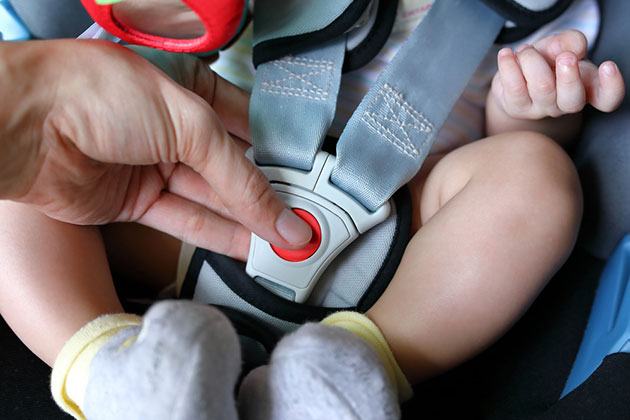
In the video, you can see the position of the children in rear-facing car seats and forward-facing seats when in a frontal car crash. In addition, the Car Seat Lady wears a helmet to add more weight to the child's head.
So, as you can see, when in the rear-facing car seat during the crash, the child's head, neck, and upper body stay straight in the line. This is because the pressure of the head absorbs in the car seat shell, keeping the whole body safe and stable.
However, when in forward-facing convertible car seats, the pressure attacks the children's chest, and the head will go forward and down towards the chest. Also, there will be pressure on the child's shoulders.
Finally, in the crash, there wouldn't be anyone to hold the child's head; therefore, they could cause a serious injury.
In conclusion, you should seat your 2, 3, 4, or even 5-year-old child rear-facing until they reach maximum weight and height limits. A rear-facing car seat is the safest option since rear-facing kids can keep their legs crossed, and leg injuries are rare in car crashes.
Unlike these, a forward-facing child will fill the pressure all over the body, which leads to severe injuries and even fatal consequences. So, you can check the full explanation here.
Another video tackles what would happen to 12-months old children in rear-facing and forward-facing car seats. You can see what happens to them in the case of a car collision.
As you might notice, the child in the rear-facing car seat does not move at all. Their body is fully protected and stable due to the car seat base, and they have maximum support, keeping them secure and intact.
On the other hand, the dummy in the forward-facing seat feels enormous pressure and external force; therefore, the kids would move their heads and necks forward and down towards their legs, which would result in severe injuries.
In addition, the child's shoulder would also be injured and meet external strength.
Thus, the rear-facing car seat offers the best protection on the road.
1. So, How Will the Rear-facing Car Seat Prevent Severe Injuries?
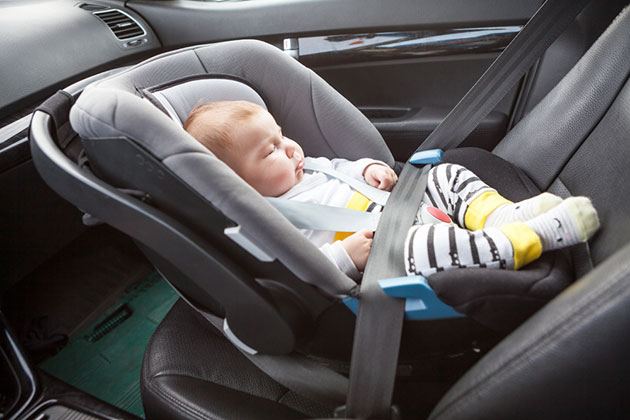
When everyone goes forward towards the source of impact and pressure in a frontal car accident, the rear-facing seat works differently, oppositely sending your kid.
Thus, the rear-facing kid will move into the back of the rear-facing seat, sliding gently up the child's seat.
This way, the rear-facing seat will absorb the impact, force, and pressure coming from the outside and direct the remaining energies along the child's back.
Hence, because they sit rear-facing, the children's torso, neck, and head move together straightly.
2. What About a Rear-end Crash?
Concerning a rear impact, the rear-facing seat will mitigate and manage external strength and forces in various ways to provide kids the best protection.
So, you can find more info about the data and studies conducted by multiple experts here.
3. What Is an Additional Issue With the Dummy in the Forward-facing Car Seat?
In crashes, everyone moves forward towards the point of force and impact.
So, if you have a child in a forward-facing seat, the seat belt stops their body quickly, as the chest strap or the seat belt holds them back.
However, there is nothing to stop the head from moving forward, so it travels to the chest and then goes back towards the car seat.
And since the newborn's head makes 25% of their body, they would pull forward with four times as much force and pressure as adults!
In addition, the infants' spine is different, soft, and stretchy. So, if the force makes them stretch more than allowed, the infants can stay paralyzed or even worse during the frontal crash in the forward-facing seat.
So, if you as parents worry about your children's safety, please, keep them in the rear-facing car seat for as long as possible!
What Happens With the Children's Legs When in Rear-facing Seats?
Don't worry! The kids will not injure their legs, and they're pretty comfortable in that sitting position.
In the video, you can notice the comparison between the rear-facing seat and forward-facing car seat in the crash, using the dummy as a test.
In addition, you can observe that in the rear-facing position, the dummy ticks onto the cannonball position. So, no matter how scrunched legs are, they will not hurt or injure themselves during the crash.
On the other hand, you can see the leg's position in the forward-facing car seat. The head moves forward, and the legs go backward; therefore, the collision can cause severe injuries for the forward-facing kid.
No Evidence Regarding Legs Injuries in Car Accidents
So far, there have not been any documented cases of rear-facing children breaking their feet, hips, legs, etc.
On the other hand, various research studies have shown that forward-facing children suffer more leg injuries and severe consequences than rear-facing little ones.
The main reason kids hurt their legs in their forward-facing car seat is that they and the car seat move forward, and their legs fly up and hit the back of the forward-facing car seat.
Therefore, the child's legs will be trapped, and their leg bones will be under pressure. Hence, the pressure will break legs easily.
Legs or Head: What to Protect Fist? Both!
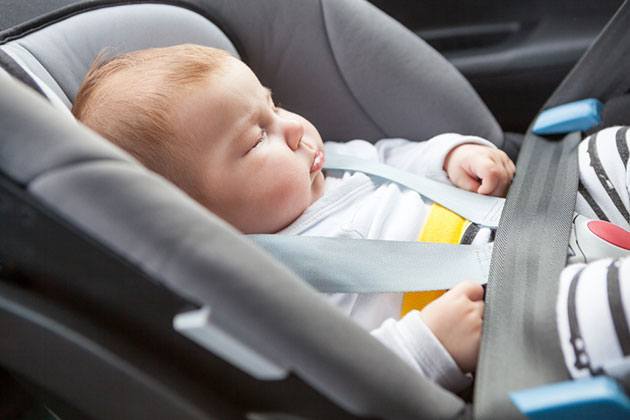
Let us focus more on the forward-facing car seat and the head position rather than legs in the rear-facing mode.
Namely, the baby's head and neck will move forward (they're literally thrown forward) since the shoulder belt only covers the chest, not the head and neck.
Of course, the seat belt system properly fits your children. However, the lap and shoulder belt must cover the child's upper thighs and chest, not their stomach, neck, and head.
But, as there is noting to protect the head and neck, they can be severely injured and even smashed due to external forces.
But, in rear-facing seats, the shell will cover the head and neck, keeping them stable and secure. So, their brain and spinal cord are also protected and supported.
What About Comfort?
Most children have their proper body positions and find their own comfort in the car seats. And as they grow older, their feet will touch the back of the vehicle seat, which is both safe and comfortable.
Besides, have you ever wondered why your little one never complains when you seat your child in the car seat, and they wake up with their chin on their chest? They're comfortable since their joints aren't completely formed.
Since kids have more flexibility and a better range of motion in their hip joints, knees, and ankles, for instance, 3-years old kids can comfortably sit in the rear-facing car seats with their legs in the frog-leg position or even crossed.
However, when in the forward-facing car seat, the children will try to put their feet up wherever they find it comfortable. So, forward-facing children are doing this since they are not comfortable!
What About 12 Months Old Kids? Can They Turn Forward-facing?
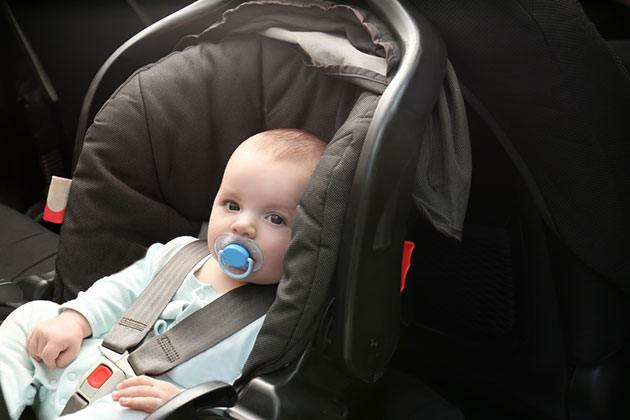
An enormous NO! Even many years ago, the minimum wage to turn your baby forward-facing was one year, and the weight limit was 20 pounds.
However, in 2011, the American Academy of Pediatrics and the NHTSA upgraded their statements regarding the child passenger safety restraint systems.
Hence, according to these verified authorities, kids must sit rear-facing until they're two years old, and even further if possible.
In addition, the NHTSA recommends that your kids should remain rear-facing until they reach the maximum weight and height limits, approved and issued by the car seat manufacturers.
Are There Exceptions?
Of course, there are! You may find that your car seat only supports kids with the upper weight limit between 20 and 22 pounds. Don't worry; your car seat is perplexing you!
In recent years, various child passenger safety restraint systems, including rear seats, have increased the upper weight and height limits and served in rear positions.
So, their rear-facing weight can be 30 pounds or even 40 pounds in various cases and models. However, their labels can confuse parents, indicating that the kids must use the forward-facing car seat when they reach 22 pounds.
So, often you can find a label saying, "Use only in a rear-facing mode when using it with the infant weighing less than 20 pounds." But, it means that this is the only direction you're allowed to install the car seat for the kids.
In other words, you mustn't use it as the forward-facing car seat for these children. Yet, children exceeding the maximum height and weight limit can still use it.
When the Kid Becomes Too Big for a Rear-facing Mode?
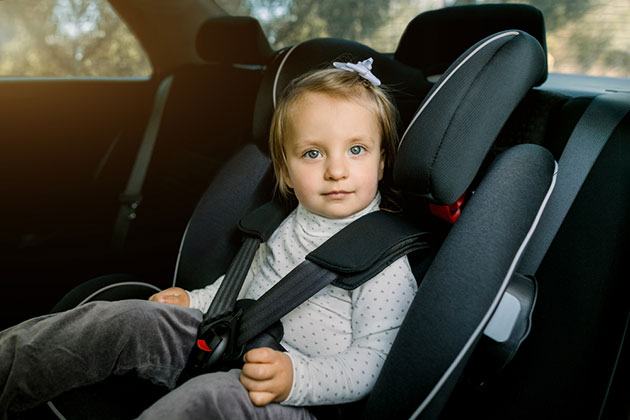
Kids can reach weight or height limits easily, but it depends on the car seat instructions.
Each convertible seat has its weight or height limit, but most convertible seats allow children to use them even when they're 30, 40, or 50 pounds.
The main rule is that there must be at least one inch between the top of the kid's head and the top of the car seat.
In a car accident, the head will remain stable and protected. So, search for the car seat that's taller than the seated height.
What About the Car Seat Safety Laws?
Car seat safety rules vary among manufacturers but also among states.
The complete comparison you can find here; however, 15 states are claiming that kids must ride rear-facing until they're two:
So, What Are the Main Rules?
According to the AAP and the NHTSA, the fundamental regulations regarding child restraints are the following:
1. Rear-facing Seats
All infants and toddlers must ride in the rear-facing and convertible mode until they overpass the weight and height limits, or at least they're two.
Ensure you install the seats at the correct angle, and the harness straps cover their upper parts adequately.
2. Forward-facing Seats
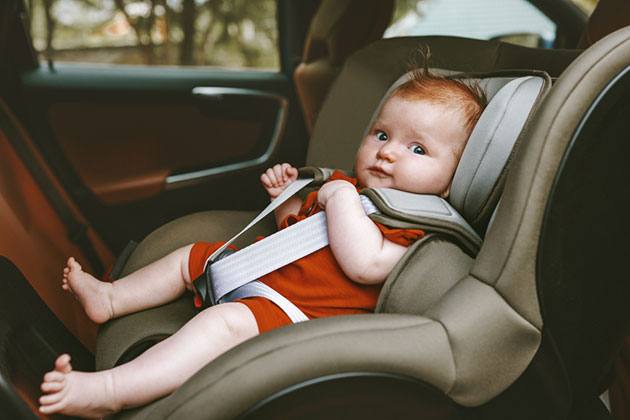
All toddlers and preschoolers must ride in the forward-facing seats in the back seat of the vehicle until they overgrow the manufacturer's size and rear-facing measures.
These seats must have proper harness straps and accommodate kids weighing 65 pounds and even more.
Many models come with the LATCH system for the most straightforward installation.
3. Booster Seats
Once your kids exceed the forward-facing measures, you can place them into the belt-positioning booster seat.
The belt-positioning booster seat must be in the back vehicle seat, with the proper seat belt installation.
For example, the lap belt must cover their thighs, not stomach, and the shoulder belt must cover their chest, not neck.
The kids 8-12 years old and 4 feet 9 inches tall can use booster seats with the proper seat belt fit. However, if they're not ready for a single seat belt, they must remain in booster seats.
For various booster seat types, click here.
4. Seat Belt
Once your kids are 13, they can ride in the front seat, yet it's better to keep them in the back vehicle seat with the vehicle seat belt.
If possible, buckle kids in the middle seating position in the back seat for as long as possible for better stability and security.
Yet, if they sit in the front seat, make sure the seat belts fit their needs correctly.
So, the proper seat belt fit implies the shoulder belt covers the child's shoulders and chest, and the lap belt covers the upper thighs. Otherwise, the kid cannot use the adult seat belt.
Also, if your car seat took part in a car accident, even a minor one, you must replace it instantly and obtain a new car seat to prevent further damage and high risks of injuries.
FAQs
At what age and weight can you turn the car seat forward?
It would be best to keep the seat rear for as long as possible, but you need to wait until the kids are at least two and around 30 pounds, or when they overgrow the manufacturer's instructions.
Still, keep them rear-facing for as long as possible!
Can a rear-facing car seat go behind the driver or passenger?
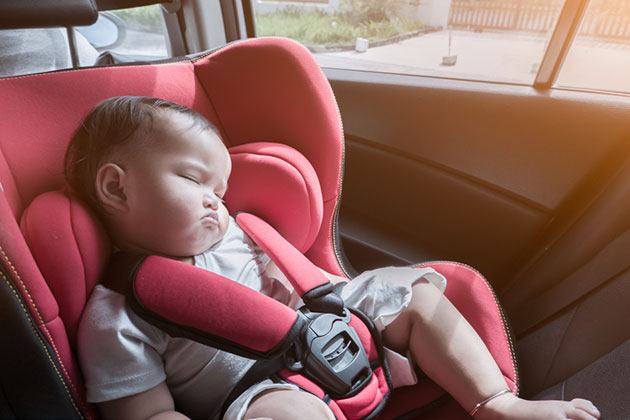
The best option is the center seat. However, you can place it on either side of the center seat is not possible.
Make sure the car seat is far away from the airbags.
When can I turn my Graco 4Ever forward-facing?
You can turn it forward when your kid weighs between 40 and 65 pounds.
Final Thoughts
So, when can you definitely turn the car seat forward?
Well, it would be best to keep your little ones in rear seats for as long as possible to prevent severe injuries and fatal consequences.
However, they can use these seats once they're two and between 22-40 pounds, but it's still not recommendable.
As you can see, there are various crucial points to consider, so make sure you examine all of them before you make such an important decision.
Remember, your child's safety comes first!
